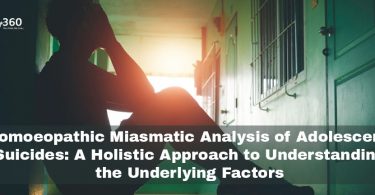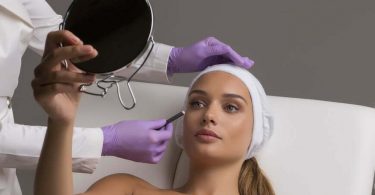
Abstract-
Introduction: Hyperglycemia is nothing but increased blood glucose levels beyond normal. It’s a diagnostic sign of Diabetes Mellitus. Diabetes is a syndrome in itself. Considering the onset, duration, progress, and involved pathology; the symptoms of diabetes are treated in Homoeopathy. This disease shows features of all the different miasms; tubercular miasm is one of them.
Case Summary-a 19-year-old boy was admitted to the inpatient department for his treatment of hyperglycemia. His blood glucose levels were above 350 mg/dl in spite of giving insulin 20 units three times a day. The homoeopathic physician was called for help. The glucose levels were increasing constantly. The patient was in a state of exhaustion. His vitality was low. There was increased urinary frequency and increased appetite. No response to the insulin therapy. Considering all the given data, Tuberculinum 200 was prescribed. After a single dose, his frequency of urination was reduced. He started feeling comfortable. His blood glucose levels were also reduced but still above 200 mg/dl. His insulin units were also reduced; After 2nd dose of Tuberculinum 200, his subjective feeling of wellness increased. All other symptoms were better. His blood glucose level was 98 mg/dl and hence his insulin was stopped. After managing this episode of hyperglycemia, his detailed case was taken and the constitutional remedy was prescribed. Then the patient was discharged when his post prandial blood glucose level was 122 mg/dl which is normal.
Keywords– Hyperglycemia, Tuberculinum, young adult
Introduction-
Diabetes Mellitus (DM) has become one of the major public health issues globally. The number of newly diagnosed cases has been rising exponentially. Depending upon the cause of DM, the leading causes of hyperglycemia are reduced insulin secretion, decreased glucose utilization, and increased glucose production. The hampered metabolism due to DM leads to secondary pathophysiological changes in multiple organ systems such as GIT, CVS, CNS, and excretory system, which burdens the individual tremendously. Epidemiological studies show the worldwide prevalence of DM has risen dramatically over the last two decades. The International Diabetes Federation projects that 642 million individuals will have diabetes by the year 2040(1). In India, as per the estimate of 2019, 77 million individuals have DM and it is expected to rise up to 145 million by 2045.(2)The prevalence of Diabetes Type 2 has been increasing rapidly as compared to Type 1. The changes of macro vascular as well as microvascular complications have been higher. These contribute to increased premature morbidity and mortality among the DM population leading to reduced life expectancy and burden on the healthcare system.
The goal of any physician in the active management of DM is to reduce hyperglycemia. Usually, oral hypoglycemic agents are introduced for this task as well as insulin. This type of medical management has been employed by physicians as a part of their regular practice. On the other hand, Homoeopathy is the medical science that operates on the principle of individualization. It provides a wide range of remedies as per symptom similarity goes. There are many published studies on the use of Syzygium jambolanum Q for reducing hyperglycemia. (3)Homeopathy not only has a role in managing hyperglycemia but also has a role in the management of complications of DM. Homeopathy does wonders in the management of DM foot ulcers. Many times an amputation of the lower extremity of having DM foot ulcer can be avoided by using Homoeopathic medicines. A case study of the use of Arsenicum album 30C has been published in which such amputation has been avoided by dressing the wound with Calendula Q and giving Arsenicum album 30C internally.(4) Also, there are remedies that can be used as constitutional remedies in managing DM. A case of Sulphur 30C was published in which the patient was started with Homoeopathic line of treatment as soon as diagnosed with DM and the hyperglycemia was reduced along with other troublesome symptoms.(5)
Patient Information–
A 19-year-old male was admitted to the inpatient department for management of high post prandial blood glucose (HBG)> 350 mg/dl. As a part of day-to-day treatment; the patient was started with insulin and some antacid for its induced hyperacidity. Being blood sugar level (BSL) on the higher side; insulin doses were 20 units before food 3 times a day. In spite of giving insulin in higher doses; the post prandial blood glucose levels were ranging between 340 mg/dl to 410 mg/dl.His Family History and Past History were not significant medically, nor was there any history of psychological illness. It was the very first episode of hyperglycemia for the patient. On examination- Pulse was 68 beats/min, and blood pressure was 104/68 mm of Hg. The respiratory rate was 12 cycles/min. It worried the in-house physician and the Homoeopathic consultant was asked for his opinion.
Clinical Findings–
A pale-looking young male was lying on the bed. The patient was having excessive dryness in the mouth. He was going for urination very frequently; every 1-2 hours. He was having perspiration only on his head which was non-offensive. He was feeling excessive weakness on account of which he was not able to stand. He hardly spoke anything with the Homoeopath. His hunger had increased for 3-4 days. The Homoeopath visited the patient on the 2nd day of admission in the afternoon at 3.30 PM.
Diagnostic Assessments–
The clinical picture was indicative of Diabetes Mellitus having classical symptoms of excessive thirst, excessive urination, and excessive hunger as well as increased blood glucose level. The patient’s BSL was 380 mg/dl before food.
Therapeutic Intervention–
Considering the clinical picture, the age of the patient, and the nature of the disease; Tuberculinum 200C was prescribed as a stat dose; 4 pills of 40 No Globules, and a single drop of medicine. The nursing staff was advised to observe and report any new symptoms, changes in symptoms, and BSL range the coming morning.
Follow-Up And Outcome–
| Date & Time | Clinical Picture | Homoeopathic Prescription | Insulin Units |
| 05.12.21
3.30 PM |
Excessive dryness of mouth. Increased urinary frequency. Offensive perspiration on head. Increased hunger. Debility++ | Tuberculinum 200C Stat Dose | 20 Units Three Times a day before food |
| 05.12.21
8.30 PM |
Frequency of Urination reduced.
He started feeling slightly comfortable. He himself asked for food for his Mother. BSL- 246 mg/dl |
SL 4 pills stat | 10 Units were given at night |
| 06.12.21
9.00 AM |
He slept well at night.
Hunger was excessive. He was able to stand. He could go tothe washroom on his own. He showed interest in bathing without anyone’s help. BSL – 214 mg/dl |
SL 4 pills stat | 10 Units were given in Morning |
| 06.12.21
2.30 PM |
He doesn’t want to talk with anyone. The frequency of urine was reduced significantly.
He could walk around in the room. Dryness of the mouth is reduced. He still felt excessively hungry. BSL- 212 mg/dl |
Tuberculinum 200C 4 pills stat given | 10 units were given in the afternoon |
| 06.12.21
9.00 PM |
He was feeling fresh the whole evening. Dryness of mouth reduced significantly.
Weakness reduced. BSL- 163 mg/dl |
SL 4 pills stat | 5 units were given at Night |
| 07.12.21
9.00 AM |
The patient was feeling better after 10-12 days. He had regular bowel movements. His Appetite became normal. Urinary frequency became normal.
BSL- 98 mg/dl |
SL 4 pills stat | No insulin was given as BSL was Normal. |
| 07.12.21
3.00 PM |
The patient himself welcomed the physician. He said he was feeling much better now. He said he was feeling cheerful from the inside. His mother thanked the physician very much.
BSL- 122 mg/dl. Patient was discharged in the evening. |
SL Pills stat.
The case was taken in detail and the constitutional remedy was prescribed. |
No insulin was given. |
Totality Of Symptoms–
Considering only the characteristic symptoms in the case, the following Totality was formed.
- Onset- Rapid
- Young Male patient
- Increasing exhaustion
- Lowered Vitality
- Increased appetite suddenly
- Affection of Pancreas- Endocrine Gland
- Constant high sugar level
- No response to Insulin Therapy
Selection of Remedy–
Considering the above totality of symptoms; a non-repertorial approach was selected. The dominance of Tubercular miasm was considered as sudden rapid onset, irreversible structural changes at a pathological level, and increasing exhaustion with rapid declining of vitality, Tuberculinum 200C(6)was prescribed as a stat dose to improve the clinical state.
Discussion–
Homeopathic remedies show wonders in illnesses that Dr Hahnemann termed as ‘acute’ where the vital force gets abnormally deranged due to rapid morbid processes. The remedies act on the dynamic plane in the most rapid and gentle way leading to the restoration of health. In case of acute emergencies, Homoeopathic remedies bring cures in the shortest, most reliable, and most harmless way.(7) The above case is just an example of the role of Homoeopathy in acute emergencies. At the physical level of tubercular expression, there is overstimulation of the sympathetic nervous system which results in the activation of the endocrine and metabolic processes. This causes increased catabolism, decreased anabolism, poor assimilation, and anemia.Hence, all tubercular manifestations as usually called ‘Heightened Psora’. There is stimulation of the Psycho-Neuro-endocrine (PNE) axis and reticuloendothelial system (RES). Increased activity simultaneously leads to generalized debility at all levels; intellectual, emotional, and physical. (8)
All these can be seen in Diabetic acceleration of the disease process in the form of symptoms such as; increased urinary frequency, state of debility, and increased appetite. The tubercular state is the last attempt of the deranged vital force to regain its normalcy.(9) So, when the patient was given Tuberculinum 200C, his generals started getting normal first; he started feeling comfortable at the mental level. That is the registration of the remedial force. All those heightened states started becoming normal in a short period of time. This in turn caused the insulin receptors on the cell membrane to work efficiently to reduce the increased BSL in no time. No further use of insulin was required. Homeopathic remedial forces act so efficiently; that just 2 doses helped to restore the deranged susceptibility to normalcy. So the case was defined in detail and he was prescribed with Phosphorus 200C as the constitutional remedy in infrequent doses. Phosphorus bears Tubercular miasm in background. Patient came for regular follow ups for 3 months. He was not started with any oral hypoglycemic agents or insulin.
The modified Naranjo criteria showed a total score of 08. It was suggestive of a probable association between the medicine prescribed and the outcome. (10)
Such cases help to build the confidence of young Homoeopaths. When the Modern medicine physician calls Homoeopaths for help in a crisis and Homoeopathy delivers results literally in no time; this boosts the acceptance of Homoeopathy.
There are no significant scientific publications present on the use of Tuberculinum in the case of Hyperglycemia. Though, there are references to the use of Tuberculinum Nosode in the management of Diabetes Mellitus when there is any recent infection present; in the article ‘Diabetes Mellitus- Homeopathic Perspective’.(11)
Also, in the article ‘Role of Nosodes and Bowel Nosodes in Management of Diabetes’, few indications of Tuberculinum in the management of Diabetes Mellitus are given. (12)
The limitation of this case report is the inability to keep records of other investigative findings such as renal profile, liver function test,and lipid; which can be indicators of his general health.
Conclusion–
This case report shows how indicated Homoeopathic remedy helps to manage the increased BSL. The infinitesimal dose can create wonders. Usually, the modern medicine physician changes the doses rather than add another type of insulin if the BSL is not coming down. But remedies as deep acting as Tuberculinum can help very efficiently and within less time. The patient was discharged after taking the case in detail. He has been prescribed Phosphorus 200C as the constitutional remedy in minimum doses so as to prevent further episodes of hyperglycemia. The patient kept coming for follow ups for next 3 months regularly. His blood glucose levels were normal and he was clinically asymptomatic. Thus, accurate selection of similimum can help to restore the altered susceptibility back to normal. The chances of early complications due to Diabetes mellitus can likely be prevented. Thus, the quality of life of such patients can be improved.
Patient Perspective–
The patient’s mother was extremely happy because of these tiny white pills which helped to stop the insulin injection of her child. The change in the general patient was not only observed by the physician but also by the patient’s mother. The mother and the patient thanked the Homoeopath &the attending staff of the hospital from the bottom of their hearts.
Informed Consent–
The patient and his mother have given their consent for publication in the journal. The patient has been informed that his identity will not be revealed anywhere in this report.
Conflict of Interest–
None declared.
Assessment of Outcome by Modified Naranjo Criteria–
| Domains | Yes | No | Not Sure or N/A |
|
+2 | ||
|
+1 | ||
|
0 | ||
|
+1 | ||
|
+1 | ||
B. Direction of Cure- did at least two of the following aspects apply to the order of improvement of symptoms- – from organs of more importance to those of less importance? – from deeper to more superficial aspects of the individual? – from the top downwards ? |
0
0 |
||
|
0 | ||
|
+1 | ||
|
+ 2 | ||
|
0 | ||
| Total Score- 08 |
References–
(1)- Jamson,Fauci,Casper,Hauser,Longo,Loscalzo.Harrison’s Principles of Internal Medicine.20thed.Mc Graw Hill Education;2018.p.2854
(2)- Pradeepa R, Mohan V. Epidemiology of type 2 diabetes in India. Indian J Ophthalmol. 2021 Nov;69(11):2932-2938. doi: 10.4103/ijo.IJO_1627_21. PMID: 34708726; PMCID: PMC8725109.
(3)-Singh, Poonam & Kumar, Praveen & Vangani, Anil & Singh, Pranesh Kumar. (2019). Role of Syzygium Jambolanum in Diabetes Mellitus-A Review Role of Syzygium Jambolanum in Diabetes Mellitus-A Review. TJHMS Volume 2. 26-30.
(4)- Ankerela P, Belgavimath S, Rotti P. Obviating surgical amputation of diabetic gangrene through homoeopathy – A case report. Indian J Res Homoeopathy 2023;17(1):39-45.
(5)-Kulkarni, Veena & Arya, Manish & Gajare, Asmita & Kshirsagar, Neeraja. (2022). A Case of Diabetes Mellitus treated Homoeopathically: A Case Report.
(6)- Murphy R. Lotus Materia Medica. 3rd revised ed. Noida: B Jain Publishers; 2006. p.1978-1979
(7)- Hahnemann S. Organon of Medicine Sixth Edition.New Delhi: Indian Books & Periodicals Publishers; 2022. p.90
(8)- Dhawale ML. Hahnemannian Totality Symposium Homoeopathic Practice Standardization part I. 3rd ed. Mumbai: Dr M L Dhawale Memorial Trust; 2003. p.C.26
(9)- Dhawale ML. Hahnemannian Totality Symposium Homoeopathic Practice Standardization part I. 3rd ed. Mumbai: Dr M L Dhawale Memorial Trust; 2003. p.C.26
(10)- Lamba CD, Gupta VK, van Haselen R, Rutten L, Mahajan N, Molla AM, Singhal R. Evaluation of the Modified Naranjo Criteria for Assessing Causal Attribution of Clinical Outcome to Homeopathic Intervention as Presented in Case Reports. Homeopathy. 2020 Nov;109(4):191-197. doi: 10.1055/s-0040-1701251. Epub 2020 Mar 25. Erratum in: Homeopathy. 2020 Oct 21;: PMID: 32215892.
(11)-Kulkarni A.Diabetes Mellitus- Homoeopathic Perspectiv; 20212. [Internet].May 2011; [cited 2023 May 12. Available from: https://hpathy.com/homeopathy-papers/diabetes-mellitus-homeopathic-perspective/.
(12)- Saraswat K.Role of Nosodes & bowel nosodes in managemnet of Diabetes. [Internet].; 2020 [cited 2023 May 28. Available from: https://www.homeopathy360.com/2019/12/31/role-of-nosodes-and-bowel-nosodes-in-management-of-diabetes/.
Author:
Dr. Ashwin Shrikant Kulkarni MD (HOM), PhD Scholar,
Assistant Professor,
Dept. of Practice of Medicine,
Late Mrs Housabai Homoeopathic Medical College & Hospital, Nimshirgaon,
Dist Kolhapur, MH
Email- k.ashwin25@gmail.com





